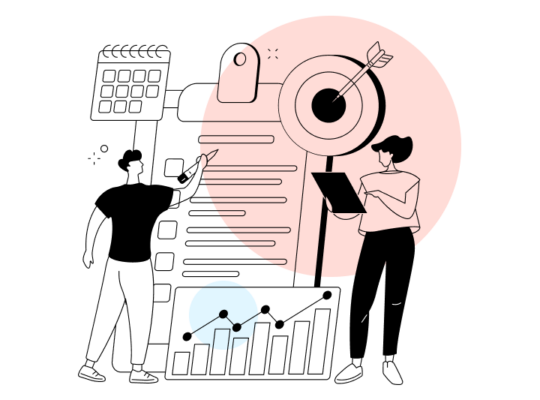Will I Get a Tax Refund This Year? What To Expect for Tax Refunds in 2025
TurboTax Canada
January 24, 2025 | 6 Min Read
Updated for tax year 2025

A lot can happen from year to year, creating uncertainty around your life and your tax situation. Maybe you started your own business, recently got married, moved provinces, or experienced some unforeseen related financial changes.
In any event, we want to ensure you feel supported when it comes to knowing whether you’ll get a tax refund, and what that might look like.
Key Takeaways
- Your tax refund depends on your total annual income, deductions, credits, and how much tax you’ve paid.
- File your taxes online and sign up for direct deposit to receive your refund faster.
- Update your personal information with the CRA as your situation may change from year to year.

How does a tax refund work in Canada?
Am I eligible for a tax refund?
The good news is everyone could be eligible for a tax refund but this depends on a few factors. Say you made $35,000 and you prepaid $5,000 in taxes. If your taxes due on your return are only $4,000, you’ll get the extra $1,000 back as a refund when you file.
Depending on your employment income, dependants, and which tax credits you are entitled to, your tax refund equation will look different. Using TurboTax ensures you get your maximum refund possible when you file.
Are tax refunds considered income?
Ah the joyous occasion of getting back your own money! Tax refunds aren’t income, they are literally your own money being returned back to you, and so they aren’t taxable.
If you received a tax refund with a little extra interest on top, that extra is going to be taxed as income for the year you received it. So, don’t forget to include refund interest listed in your Notice of Assessment (NOA) as income because that is taxable.
How do I calculate my tax refund?
Fill in your income and expenses and see your refund or taxes owing estimate.
Get Your EstimateWhen can I expect my tax refund?
If you filed online using NETFILE, it can take up to 2 weeks to receive your tax refund. Signing up for direct deposit on CRA My Account will get you your money 3-5 days faster than receiving a cheque in the mail. If you filed by mail, it may take up to 8 weeks.
If you live outside Canada and file a non-resident personal income tax return, it may take up to 16 weeks to receive your refund.
What is the maximum tax refund I can get in Canada?
Your maximum refund is based on your total income, the tax credits you claim, as well as how much tax you’ve already paid, depending on your personal situation.
Most importantly, tax refund amounts can look different for every tax payer. Here are a few different scenarios that show how the tax equation is different for everyone:
- An employee paying taxes all year may receive a refund if they make an RRSP contribution.
- A student may save their tuition credits and student loan interest as future deductions to get a refund when they’re earning more.
- The self-employed have to set aside a part of each pay and prepay for any taxes due before they file, claiming deductions can help reduce that amount.
- A parent can claim child care expenses to receive benefits for their children in the form of a refund.
- A senior who shares their pension with their spouse may save taxes overall as a couple or even get a refund.
If you don’t agree with your tax refund amount, you can review your NOA for changes or errors, and contact the government if you find anything. If this seems like a daunting task, sign up for Audit Defense before you file your taxes and TurboTax will follow up with them for you.
Where can I check my tax refund status?
You’ve filed your taxes, you’re expecting a refund, and you just can’t take the suspense!
When will your funds be released? Your tax refund is set free along with your NOA, which is either mailed to you, or posted online to your personal CRA My Account.
You can check your refund status online, by logging in, or, if it’s been more than eight weeks since filing, call 1-800-959-1956 to check the status with the CRA directly.
Why tax refund is delayed?
Frequently Asked Questions
This depends on your personal situation and whether you qualify for one of multiple credits that can generate a refund for you. Here are some examples of credits to consider applying for:
- If you’re caring for young children, claim the child care expense deduction.
- If you’re taking care of an older parent, spouse or sibling with a disability, claim the Canada Caregiver Creditor the eligible dependant deduction in certain situations.
You may also qualify for a transfer of tuition credits from your spouse, child or grandchild which can also help reduce your tax bill.
If you file online you can receive your payment as quickly as two weeks, if you are signed up for direct deposit, it is even faster, you may see a deposit in just a few days after filing.
If you file online you can receive your payment as quickly as two weeks, if you are signed up for direct deposit, it is even faster, you may see a deposit in just a few days after filing.
Related articles

© 1997-2024 Intuit, Inc. All rights reserved. Intuit, QuickBooks, QB, TurboTax, Profile, and Mint are registered trademarks of Intuit Inc. Terms and conditions, features, support, pricing, and service options subject to change without notice.
Copyright © Intuit Canada ULC, 2024. All rights reserved.
The views expressed on this site are intended to provide generalized financial information designed to educate a broad segment of the public; it does not give personalized tax, investment, legal, or other business and professional advice. Before taking any action, you should always seek the assistance of a professional who knows your particular situation for advice on taxes, your investments, the law, or any other business and professional matters that affect you and/or your business.









